Blog
Stay informed with the latest in dental health, treatment advancements, and expert tips from Al Safwa Medical Center in Abu Dhabi. Our blog is your go-to resource for maintaining a healthy, radiant smile.
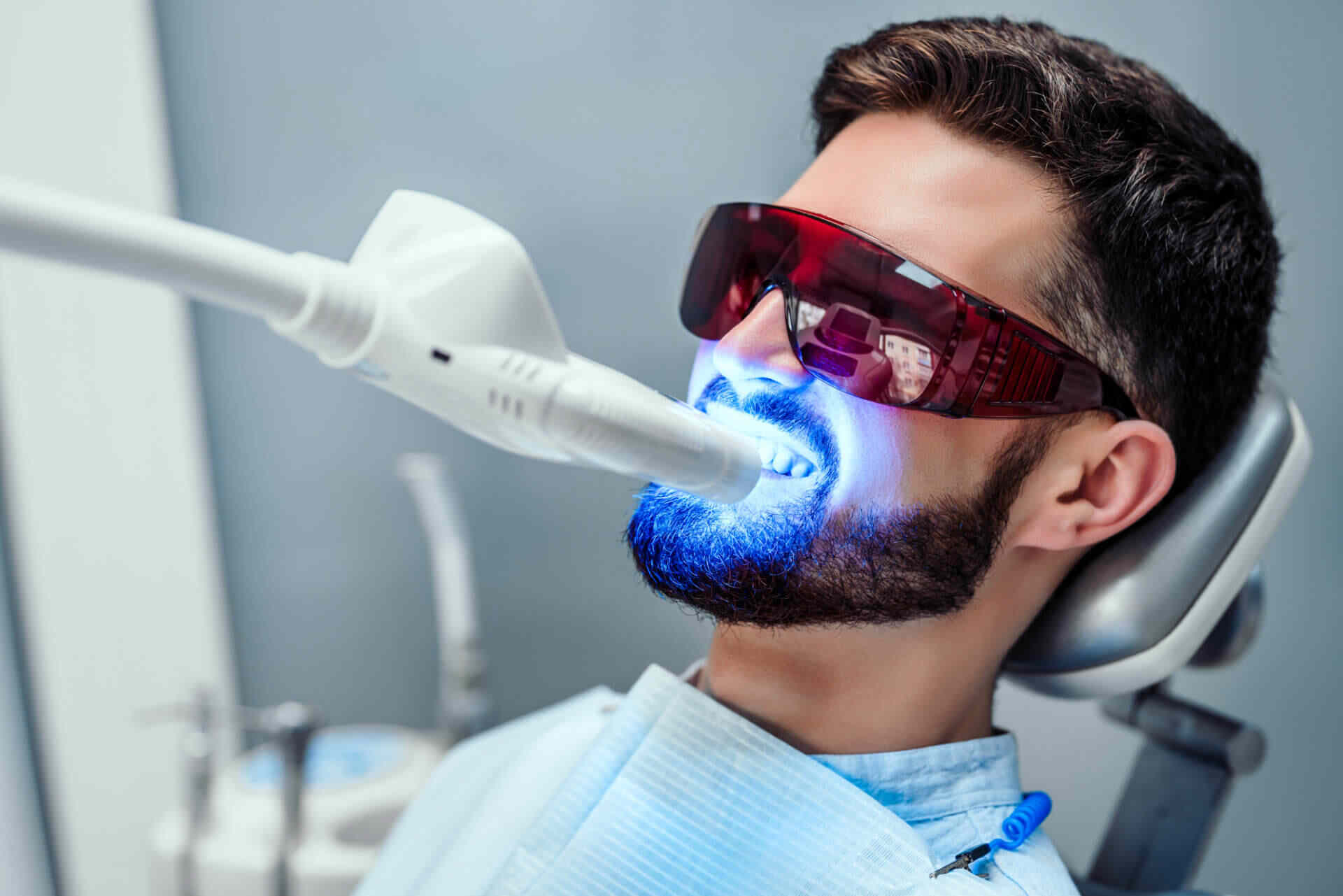
Laser vs Nano Teeth Whitening: Which Is Right for You?
A bright smile can transform how you look and feel, yet achieving safe and predictable whitening results depends heavily on technique and clinical control. In Abu Dhabi, laser teeth whitening and nano teeth whitening are two of the most requested cosmetic procedures at Al Safwa Medical Center. Both aim to remove intrinsic and extrinsic stains, but they differ in mechanism, energy delivery, material composition, and indications.
This article explains the science, clinical workflow, patient selection criteria, and realistic outcomes of each whitening method so you can make an informed decision under the guidance of our cosmetic dentists.
Understanding Tooth Discoloration Before Whitening
Discoloration can be extrinsic, caused by surface stains from coffee, tea, smoking, or colored foods, or intrinsic, resulting from deep pigment deposition within enamel and dentin due to aging, fluorosis, tetracycline exposure, or trauma.
Before selecting a whitening modality, our clinicians evaluate:
- Enamel thickness and mineralization
- Existing restorations (composite, crowns, veneers)
- Gingival health and root exposure
- Sensitivity level and history of bleaching treatments
Correct diagnosis ensures the whitening technique addresses the stain’s depth without damaging enamel or pulp vitality.
What Is Laser Teeth Whitening?
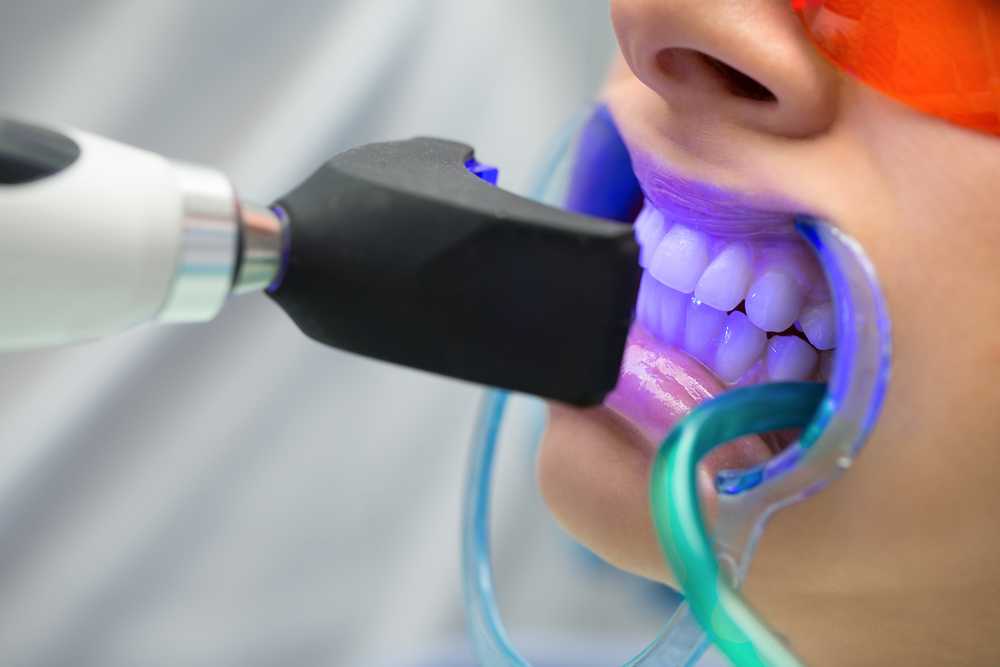
Laser teeth whitening, also known as photo-activated bleaching, uses a hydrogen-peroxide-based gel activated by specific light wavelengths (commonly diode, argon, or Nd:YAG lasers). The laser accelerates oxidation of chromogens within enamel prisms, breaking pigmented molecules into colorless fragments.
How Laser Whitening Works Clinically
- Isolation and protection: A rubber dam or liquid barrier shields the gingiva and lips.
- Gel application: A professional-grade peroxide gel (typically 35–40 % concentration) is evenly spread on tooth surfaces.
- Laser activation: The beam activates the bleaching agent for 20–30 seconds per tooth segment.
- Neutralization and rinse: After several cycles, the gel is suctioned and the area neutralized.
The chemical reaction releases oxygen radicals that oxidize stain molecules without mechanically abrading enamel.
Advantages of Laser Whitening
- Rapid results, often 6 to 8 shades lighter in one session
- Controlled activation limited to target areas
- Suitable for patients needing instant improvement (events, weddings, etc.)
- Reduced treatment time compared with conventional light-cure systems
Clinical Considerations and Contraindications
Patients with generalized hypersensitivity, cracked enamel, or extensive restorations may experience transient discomfort. The laser’s thermal energy, although low, must be monitored to avoid pulpal overheating. At Al Safwa Medical Center, laser settings are calibrated based on tooth shade, enamel translucency, and manufacturer’s absorption coefficients to maintain thermal safety below 5 °C rise.
What Is Nano Teeth Whitening?
Nano teeth whitening employs nanotechnology-based gels containing nano-sized calcium, hydroxyapatite, or peroxide-encapsulated particles. Instead of relying solely on heat or intense light, nano-whitening penetrates micro-pores through ionic diffusion and micro-abrasion to remove deep stains while simultaneously remineralizing enamel.
How Nano Whitening Differs in Mechanism
- Uses nanoparticles (10–100 nm) to increase surface contact and penetration.
- Often combines cold-light activation or blue LED systems instead of high-intensity lasers.
- Focuses on ion exchange and enamel repair alongside bleaching.
Clinical Workflow for Nano Whitening
- Initial scaling and polishing to remove calculus and plaque biofilm.
- Application of nano-gel, typically containing nano-hydroxyapatite, potassium nitrate, and mild peroxide.
- LED activation for 15–20 minutes to enhance reaction kinetics.
- Post-treatment fluoride or calcium varnish to stabilize enamel crystals.
Unlike purely peroxide-driven bleaching, nano systems deliver both whitening and desensitizing benefits, making them appropriate for patients with sensitivity or thin enamel.
Key Differences Between Laser and Nano Whitening
| Parameter | Laser Teeth Whitening | Nano Teeth Whitening |
| Energy source | High-intensity diode or Nd:YAG laser | Low-intensity LED or none |
| Active agent | Hydrogen peroxide 35–40 % | Nano-hydroxyapatite + peroxide microcapsules |
| Mechanism | Photo-oxidation of pigments | Chemical diffusion + enamel remineralization |
| Duration | 30–45 min single session | 45–60 min single or dual session |
| Sensitivity risk | Moderate–High | Low–Minimal |
| Whitening depth | Strong for intrinsic stains | Moderate, ideal for surface discoloration |
| Maintenance frequency | Every 6–12 months | Every 3–6 months |
| Indicated for | Heavy smokers, deep stains, quick results | Sensitive teeth, enamel repair, gradual whitening |
At Al Safwa, selection depends on stain etiology, enamel condition, and patient preferences.
How Do We Assess Which Treatment Is Right for You?
Our dentists follow a diagnostic whitening protocol:
- Shade analysis using VITA or spectrophotometer before and after trial bleaching.
- Enamel mapping via magnification to detect cracks or decalcifications.
- Gingival health scoring using periodontal indices.
- Sensitivity testing through air blast or thermal stimuli.
If enamel is thick and stains are intrinsic, laser whitening yields faster and longer-lasting results. For patients with generalized wear, exposed dentin, or previous bleaching sensitivity, nano whitening provides a safer alternative with additional remineralization.
How To Prepare for a Teeth Whitening Procedure?
Preparation ensures predictable outcomes and minimizes adverse effects:
- Schedule professional cleaning at least one week before bleaching.
- Avoid colored foods and tobacco for several days prior.
- Treat active decay or gum inflammation before whitening to prevent sensitivity.
- Discuss current medications, as certain antibiotics or iron supplements may cause extrinsic stains that resist whitening.
- Document baseline shade using a standard guide for comparison.
During your consultation at Al Safwa Medical Center, clinicians evaluate your oral condition and recommend pre-treatment fluoride or desensitizing agents if necessary.
What Happens During a Laser Whitening Session at Al Safwa?
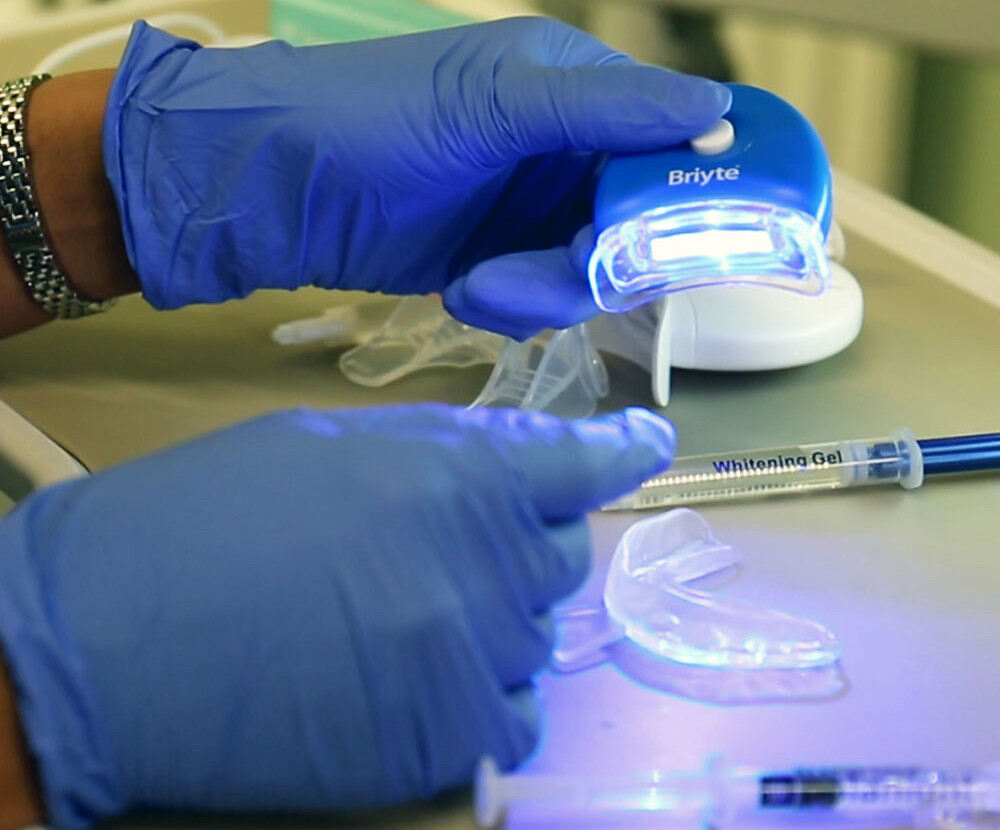
- Gingival barrier application to shield soft tissues.
- Placement of cheek retractors and eye protection.
- Peroxide gel layer evenly applied on exposed enamel surfaces.
- Laser activation cycle of 15–30 seconds per tooth region.
- Gel suction, rinse, and reapplication if deeper stains persist.
- Post-treatment neutralizer and application of potassium nitrate gel.
Our dentists monitor shade changes in real time, ensuring uniform color and minimal dehydration. Patients typically leave the clinic with visibly whiter teeth within 45 minutes.
What Are the Clinical Steps in Nano Whitening?
Nano whitening integrates biomimetic remineralization into whitening. The session proceeds as follows:
- Cleaning and pumice polishing to expose clean enamel.
- Application of nano-active whitening gel, often containing nano-hydroxyapatite (nHAp), calcium phosphate, and mild peroxide.
- Cold-light activation to accelerate chemical interaction without thermal damage.
- Rinse and evaluate shade improvement after 15 minutes.
- Second layer if needed, followed by a calcium-fluoride varnish to reinforce enamel.
This dual action not only whitens but also fills micro-defects, giving a smooth, glossy surface similar to natural enamel prisms.
Are These Treatments Safe for Gums and Enamel?
Clinical literature supports the safety of both methods when performed by dental professionals. At Al Safwa Medical Center:
- Laser intensity is maintained within manufacturer’s safe irradiance limits (below 1 W/cm²).
- Nano gels are certified biocompatible, ISO 10993-tested for cytotoxicity.
- Isolation techniques prevent peroxide leakage onto soft tissue.
- Desensitizing agents (potassium nitrate, calcium sodium phosphosilicate) are routinely applied.
These protocols align with the American Dental Association (ADA) guidelines on vital tooth bleaching, ensuring controlled exposure and enamel preservation.
What Side Effects May Occur After Whitening?
Minor side effects are temporary and manageable:
- Transient sensitivity lasting 24–48 hours.
- Soft tissue irritation if gel contacts the gingiva.
- Color rebound due to enamel rehydration (normal within 7 days).
Post-treatment, we prescribe fluoride varnish or nano-hydroxyapatite toothpaste to reduce discomfort and stabilize color.
How Long Do Results Last and How to Maintain Them?
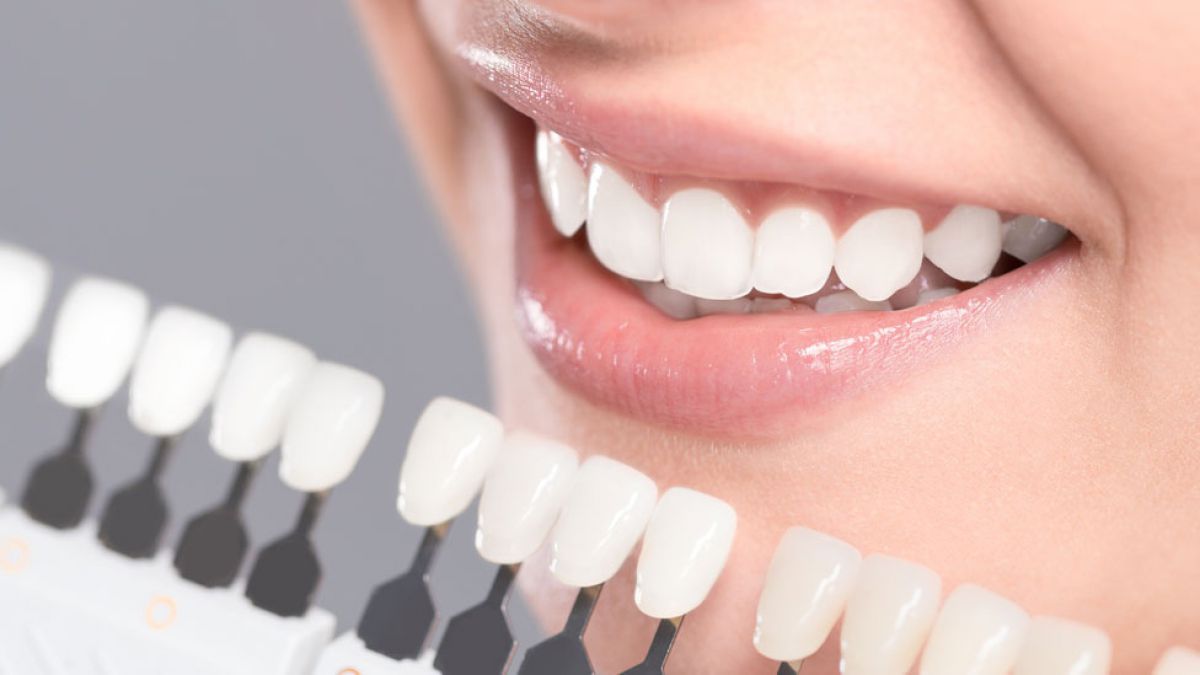
- Laser whitening results last about 12–18 months with proper maintenance.
- Nano whitening results last 6–12 months due to milder peroxide concentrations.
Maintenance tips:
- Brush with low-abrasion whitening toothpaste.
- Avoid frequent intake of coffee, tea, or red wine.
- Rinse after pigmented foods.
- Schedule touch-up sessions every 6–12 months.
- Use custom home whitening trays as advised for shade stability.
Regular professional scaling complements these measures by preventing plaque accumulation that can dull whitened enamel.
Which Method Is Better for Sensitive Teeth?
Patients with enamel erosion, exposed dentin, or history of post-whitening pain usually tolerate nano whitening better due to its remineralizing effect. Nano-hydroxyapatite occludes dentinal tubules, decreasing fluid movement and nerve excitation.
Laser whitening can still be used cautiously by reducing peroxide concentration and limiting exposure cycles. Our clinicians assess pulp vitality and enamel thickness before proceeding.
How Does Laser or Nano Whitening Interact With Other Dental Procedures?
A whitening plan should complement, not conflict with, other treatments:
- Before veneers or crowns: bleaching is done first to ensure restorations match the new shade.
- After orthodontic treatment: removes decalcification marks post-braces.
- Following gum treatment or scaling: ensures stain removal and uniform exposure of enamel.
- After implants or composite fillings: note that restorations do not lighten; color matching may require replacement for harmony.
At Al Safwa, each whitening procedure is scheduled after full restorative and periodontal assessment to maintain occlusal and esthetic balance.
Can Children or Teens Undergo Whitening?
Pediatric and adolescent whitening requires strict supervision. The minimum age recommended by ADA is 16 years, once permanent dentition is complete. For younger patients with discoloration due to fluorosis or trauma, nano whitening is sometimes used at lower concentrations under pediatric dental supervision because it strengthens enamel instead of simply bleaching it.
Our pediatric specialists evaluate each case individually, focusing on safety and long-term tooth integrity.
What Happens If You Combine Laser and Nano Techniques?
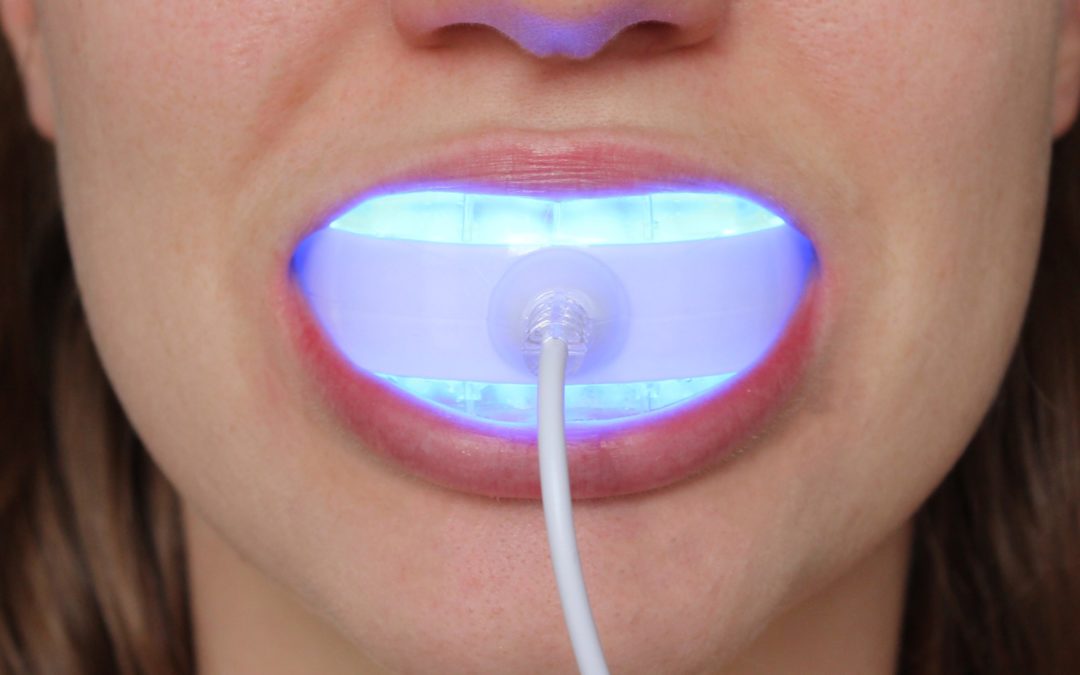
Some advanced protocols integrate both systems. Laser whitening is performed first to remove intrinsic pigmentation, followed by nano-whitening to reseal enamel porosities and reduce sensitivity. This hybrid whitening provides both intensity and longevity.
Clinically, it involves:
- Laser bleaching (35 % peroxide, 810 nm diode, 2 cycles)
- Immediate application of nano-hydroxyapatite gel for 10 minutes
- Polishing and fluoride varnish finish
This combination yields a highly reflective, glassy enamel surface with enhanced color stability.
How Do Laser and Nano Whitening Compare to At-Home Kits?
At-home kits (over-the-counter strips, LED trays) contain peroxide ≤ 6 % and lack professional isolation. Results are modest and may cause uneven color or gingival irritation. In contrast, in-office whitening at Al Safwa Medical Center provides controlled peroxide concentration, precise light energy, and dentist-supervised application, minimizing side effects while maximizing results.
Post-Treatment Diet and Care Instructions
The first 48 hours are crucial for color stabilization. Patients should:
- Avoid colored foods (coffee, curry, berries, beetroot).
- Refrain from smoking.
- Drink plenty of water to maintain hydration.
- Use straw for colored beverages.
- Continue prescribed remineralizing toothpaste.
Following these instructions maintains the achieved shade and prevents micro-re-staining during enamel porosity recovery.
Final Comparison Summary
| Aspect | Laser Whitening | Nano Whitening |
| Whitening intensity | Very high (6–8 shades) | Moderate (3–5 shades) |
| Sensitivity | Possible | Minimal |
| Ideal candidates | Deep stains, quick results | Sensitive teeth, mild stains |
| Duration of effect | Up to 18 months | 6–9 months |
| Enamel protection | Limited, requires post fluoride | Built-in remineralization |
| Cost (AED) | 800–1500 | 600–1200 |
| Recommended by Al Safwa | For fast visible results | For safe maintenance and repair |
Conclusion
Both laser teeth whitening and nano teeth whitening offer effective, clinically proven pathways to a brighter smile when conducted under professional supervision. The right choice depends on your enamel condition, stain origin, and sensitivity profile. At Al Safwa Medical Center in Bani Yas, Abu Dhabi, our cosmetic dentists evaluate each case using digital shade analysis and recommend individualized whitening protocols supported by scientific evidence and patient comfort.
For further details or to schedule your consultation, visit alsafwamedical.ae and explore our complete range of cosmetic dentistry, periodontal therapy, orthodontics, implants, pediatric care, and oral surgery services.
0 Comments